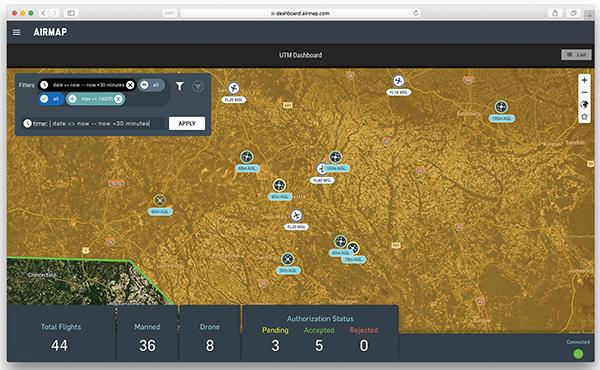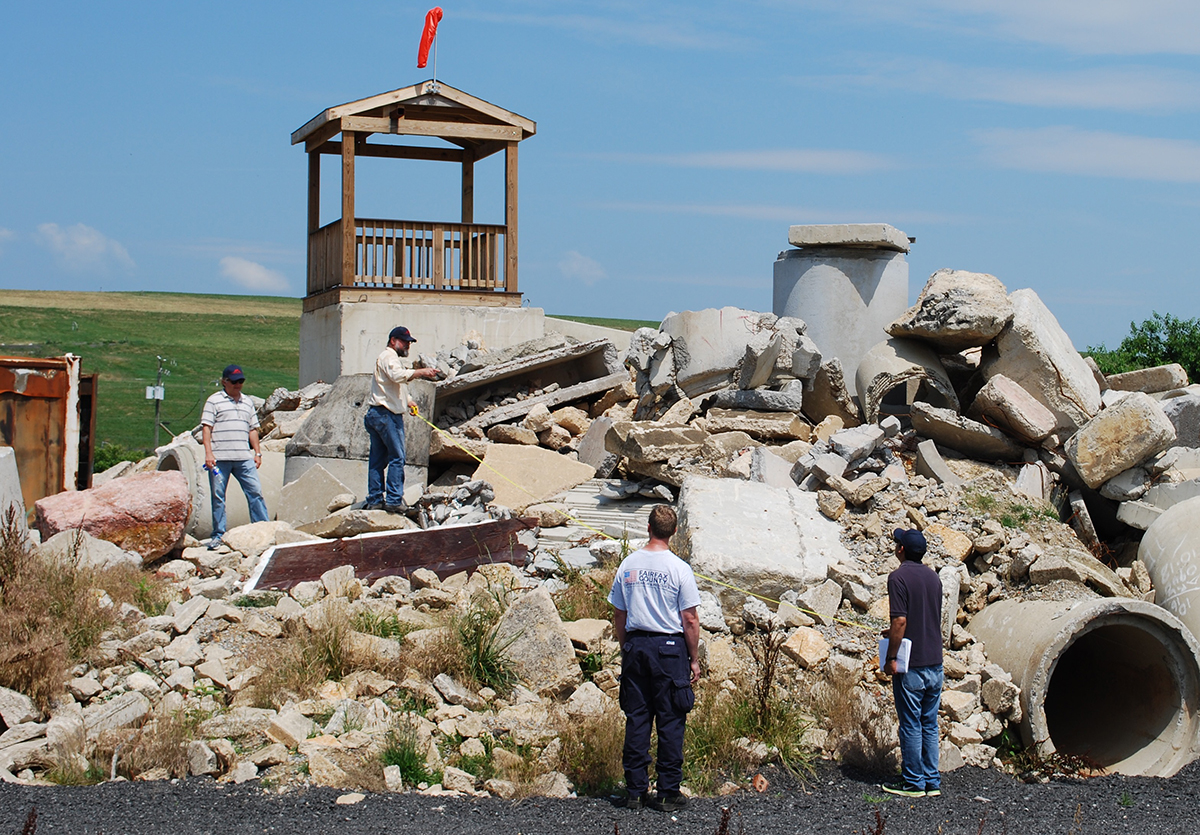
FINDER Finds Its Way into Rescuers’ Toolkits
Subheadline
NASA-designed technology helps find trapped individuals in the wake of disaster
After a natural disaster, time is of the essence to find and rescue missing people. In collapsed buildings, survivors could be trapped under enormous piles of rubble. Even with the assistance of specialized teams or trained dogs, it can take days to find people, and by then, responders might be too late. With NASA’s help, the Department of Homeland Security (DHS) was able to produce designs and prototypes for a tool that could detect people trapped under several feet of rubble, one that’s now being used for several public safety applications.
In 2010, the Federal Emergency Management Agency (FEMA) Urban Search and Rescue Task Force teams provided humanitarian aid after a devastating earthquake in Haiti, where hundreds of people were trapped under fallen buildings in the country’s capital of Port-au-Prince. Incidents like this were the catalyst for a request to the DHS Science and Technology Directorate for a technology that would add to the search and rescue toolbox for first responders to locate people trapped under rubble in similar disasters.
The request soon came to managers at NASA’s Jet Propulsion Laboratory in Southern California. Homeland Security had seen that JPL had previously collaborated with the military on remote sensing technology to try and measure heartbeats from a distance, and the department thought that work might help with the tool request. The project was dubbed Finding Individuals for Disaster Emergency Response (FINDER), and a team was assembled at JPL to design a prototype, funded by DHS.
Don’t Skip a Beat
FINDER works by using microwave radar to detect miniscule motions of the body caused by processes innate to living things, such as heartbeats or respiration. While these tiny movements are hard to see with the human
eye, the wavelengths used by microwave radar can penetrate deep through mountains of dirt and rubble.
“Your body moves a millimeter when your heart beats. Because the rubble itself isn’t moving, we can separate those motions out. Then, we look to see if the motion shows both heartbeats and respiration,” said Jim Lux, who was task manager on the FINDER prototypes.
FINDER can distinguish between movements made by people and machinery, and even between people and animals – an important distinction in the rapid-paced search-and-rescue environment.
The prototypes were built into a Pelican case, a brand of ruggedized container typically used to transport high-end gear and equipment. First responder teams have other equipment in Pelican cases, so they know how to pack and repair them.
“Search and rescue is all about logistics,” Lux said. “If you make a weird box and the handle breaks off, that’s a problem for them. Build it into something they’re used to, and they know exactly what to do.”
The initial FINDER wasn’t without its limitations. It couldn’t accurately determine how many individuals were buried, and it couldn’t see very far past certain materials, such as solid metal walls, but the concept proved to have merits.
“The NASA culture is to try and make things perfect,” Lux said. “We were told by the DHS undersecretary, ‘You’re going to want to make it perfect, but I would rather have something that is an 80% solution, because during the years of making it perfect, people will die. If you give us something that’s not quite perfect, we can save lives in the meantime, and we can work on it more later.’”
After the initial prototype showed promise, SpecOps Group Inc. of Sarasota, Florida, was one of two companies that received licenses to build commercial versions of FINDER. Founded by Adrian Garulay and Tom Coulter in 2015, SpecOps is dedicated to equipping public safety and military organizations with tools to protect people. The company’s leadership is made up of former military and government officials, who saw the benefits in a technical partnership with NASA.
The company constructed additional prototypes with the help of the designers at NASA and continued to work with Lux and JPL to get manufacturing going. SpecOps saw several scenarios the technology could be used for, such as searching for people buried under snow after an avalanche.
“The way they look for people in avalanches right now is by sticking long poles in and seeing if they hit you. It’s a really tedious process,” Lux said. “With FINDER, you can put the sensor on a long rope and drag it along the surface, looking for the heartbeats under the snow.”
After FINDER was completed, Lux moved on to other projects at NASA, but SpecOps kept working at it. X3 FINDER, the latest variant, has differences from the original NASA-designed version. Housed in a bright-red case, X3 FINDER is much lighter than the prototypes, weighing in at only 13 pounds, and is more capable, able to conduct a full scan in under 30 seconds, compared to the 90 the original took. An advanced model of the X3 FINDER called FINDER MK4 is even lighter and interfaces to iOS and Android phones.
FINDER Gets Found
Of the two companies that partnered in the program, SpecOps is the only company still producing a FINDER derivative.
Long after its initial request for a new tool, FEMA deployed X3 FINDER in the Bahamas after Hurricane Dorian in 2019, assisting in recovery after the Category 5 storm.
All of SpecOps’ sales have been to local or national government authorities. One of the company’s most notable non-military sales is to the fire and rescue department in Orange County, California. SpecOps has also taken FINDER international. In addition to having sales offices in Singapore and Sweden, it’s sold the product to public safety departments in countries such as the United Kingdom, France, Norway, Saudi Arabia, and the Philippines.
Garulay said the initial sales from FINDER are funding additional detection devices intended for police use, such as Cyclops ID, a handheld device that detects movement through walls via Doppler radar and can locate subjects in three seconds.
“Same principle, just in a different form,” Garulay said.
Across the world, FINDER devices are being kept in reserve and demonstrating their usefulness in the meantime. Both Garulay and Lux think this collaboration between NASA and private industry will save hundreds of lives.
“It’s rewarding to work with these licensees. They’re the ones in touch with the users, learning about how they work or any issues they may have,” Lux said. “They can take a concept that has a lot of warts and work on it a lot easier than NASA can.”
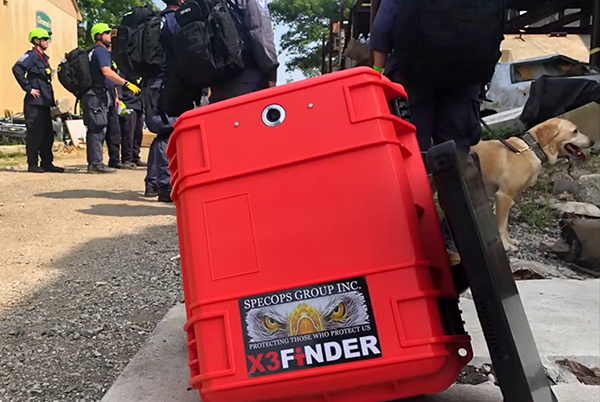
During the Department of Homeland Security’s (DHS) Shaken Fury exercise in 2019, rescue teams from several countries tested X3 FINDER for use in finding people trapped after several disasters, such as floods and earthquakes. Credit: SpecOps Group Inc.
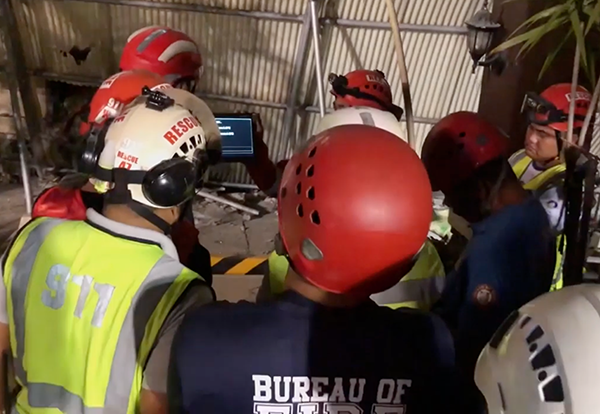
In 2019, SpecOps’ X3 FINDER was deployed in the Philippines to help find people buried under rubble after an earthquake in Davao City. Using a tablet, rescue workers are able to see if there are any people in need of rescue. Credit: SpecOps Group Inc.
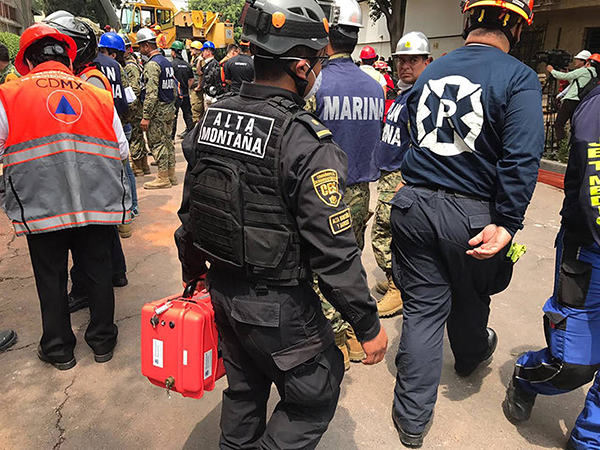
An emergency responder in Mexico City carries an X3 FINDER while responding to a 7.1 magnitude earthquake. Credit: SpecOps Group Inc.
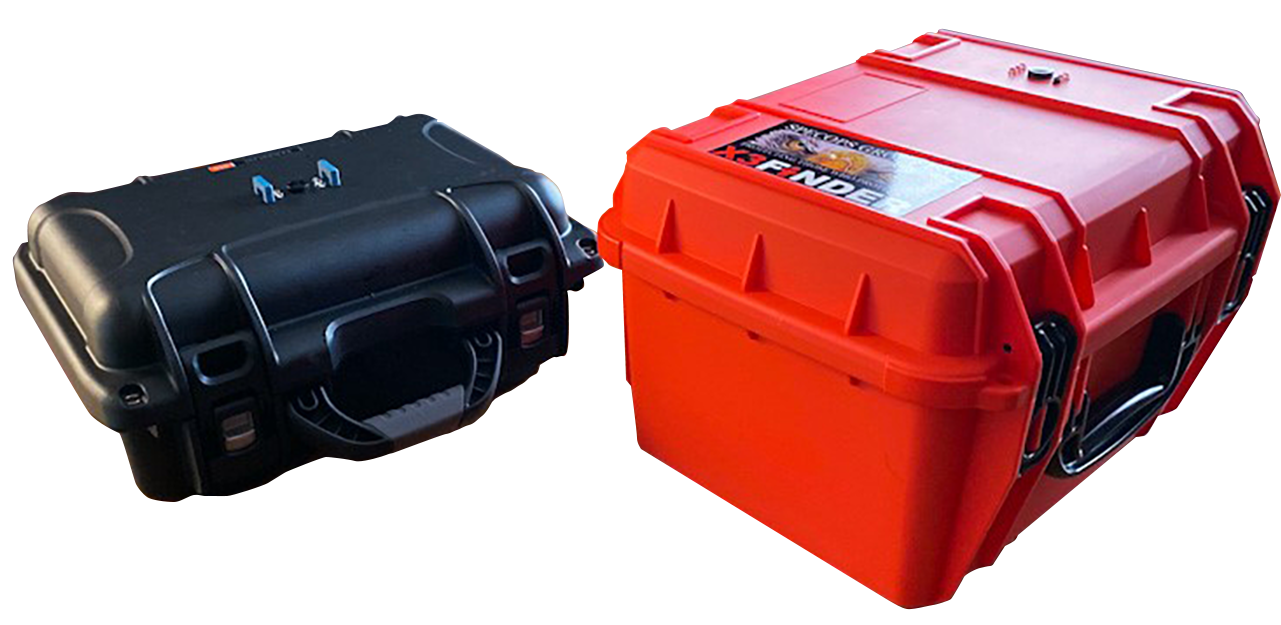
The MK4 version of X3 FINDER is noticeably smaller than previous iterations and is compatible with both iOS and Android devices. Credit: SpecOps Group Inc.

To test the prototype version of FINDER, several NASA engineers, including Jim Lux (second from the left), worked alongside DHS at the Virginia Task Force 1 Training Facility in Lorton, Virginia to test how far the device could see into rubble. Credit: Department of Homeland Security/John Price













